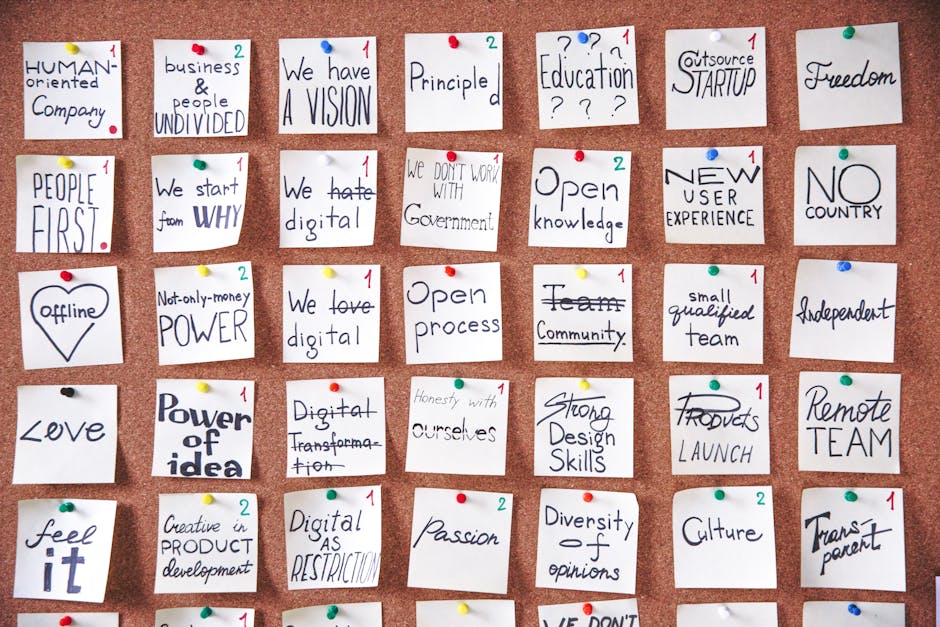Cultivating Digital Empathy: AI Tools to Empower Remote Teams
In an era where remote work is the norm, cultivating a sense of empathy and connection among team members is paramount. As companies increasingly rely on AI tools and automation, striking a balance between efficiency and the human touch can seem daunting. How can businesses leverage AI to foster emotional connections and facilitate collaboration in virtual environments? Join me as we explore "AI-Powered Ethos: Cultivating Digital Empathy in Remote Team Dynamics," a transformative approach to enhance employee engagement and productivity.
The State of Remote Work: Challenges and Opportunities

With the rise of remote work, teams are grappling with challenges that were once taken for granted in traditional office settings. Communication barriers, a lack of personal interaction, and feelings of isolation can all lead to reduced morale and productivity. Interestingly, research from the Harvard Business Review indicates that remote workers often feel disconnected from their organization’s culture, which can hinder creativity and innovation.
However, remote work also presents unique opportunities. Businesses can tap into a global talent pool and reduce overhead costs, making it essential to find effective ways to maintain team cohesion. Enter AI—powerful tools designed to enhance communication, streamline workflows, and, crucially, nurture emotional landscapes within digital teams.
AI Tools for Communication: Breaking Down Barriers

At the heart of effective remote team dynamics lies robust communication. AI-powered platforms like Zoom with AI enhancements or Slack’s machine learning features are designed to facilitate seamless engagement. These platforms not only support video and messaging but also analyze interactions to provide insights into team engagement.
One notable example is how integrated AI systems can flag communication trends, alerting managers to potential disengagement among team members. This proactive approach allows for timely interventions. Instead of waiting for formal feedback sessions, leaders are equipped to recognize and address issues as they arise, fostering an environment where employees feel heard and valued.
Building a Culture of Empathy with AI

Having the right tools is just one aspect of fostering empathy in remote teams. AI can aid in creating an ethos of empathy by offering insights into employee sentiment. For instance, sentiment analysis tools analyze chat communications to gauge team morale. Such data can empower leadership to understand the emotional climate of the team, allowing for tailored strategies to enhance morale and connection.
Moreover, as explored in AI-driven insights not only aid in understanding employee needs but also inform customer service interactions. When employees empathize with customer emotions, they’re more likely to create solutions that resonate with clients on a personal level. Such applications of AI can bridge the gap between human and technology interactions, reinforcing bonds within teams and with customers alike.
Automating Routine Tasks: Freeing Up Time for Connection

One of the most recognized benefits of AI tools is their ability to automate mundane tasks, allowing employees to focus on more strategic and meaningful work. Tools like Trello or Asana leverage AI to organize projects and prioritize tasks, ensuring that employees aren’t bogged down in repetitive processes.
This automation also contributes to team dynamics by allowing more space for creative collaboration. When team members are not preoccupied with menial tasks, they can engage in brainstorming sessions or creative projects, driving innovation. Remember, employees who feel they are part of meaningful work are more likely to invest emotionally in their roles.
Fostering Collaboration with AI-Powered Brainstorming

The way teams brainstorm and develop ideas has fundamentally changed in remote settings. Platforms employing AI can analyze previous projects and user interactions, offering suggestions for effective collaborative brainstorming sessions. Research shows that diverse teams lead to more creative solutions; AI can help facilitate diversity by suggesting team compositions based on past success patterns.
Moreover, AI-driven brainstorming tools have transformed the way teams conceptualize new ideas, making remote collaboration more meaningful. They can generate prompts based on project goals or emerging industry trends, igniting creativity when team members gather virtually.
Maintaining Company Culture: The Role of AI Tools

Preserving a company’s culture in a remote environment is a unique challenge that requires deliberate effort. AI tools can assist in creating experiences that reflect core values, whether through virtual events that encourage team bonding or scheduling regular check-ins that prioritize human connection over task management. For example, platforms like 15Five utilize feedback mechanisms to ensure company culture remains front and center.
Immediate feedback loops through AI systems can enhance how teams celebrate achievements or support one another, ensuring that the essence of “team” thrives regardless of the physical distance. By regularly checking in on team morale and addressing issues, businesses can create a culture of transparency and collaboration.
The Impact of AI on Employee Well-Being

One of the emerging areas where AI is proving invaluable is in fostering emotional wellness among remote employees. Tools designed to monitor employee well-being, such as AI-driven wellness chatbots, provide quick check-ins and support, helping teams navigate periods of stress or uncertainty.
Through internal links like predictive analytics, companies can identify trends in employee stress levels. This data allows for earlier intervention and tailored support initiatives that resonate with team members’ emotional needs. Offering resources for stress management and mental health creates an empathetic atmosphere, fostering trust within teams.
The Future of AI: Balancing Technology and Humanity

As AI technologies evolve, the potential applications in the workplace are staggering. The intersection of AI tools and human emotions will define the future of work, and organizations must remain attuned to this evolution. This journey involves not just deploying AI for efficiency but actively engaging in discussions about the ethical implications of AI in the workplace.
Today’s businesses find themselves at a crossroads where they can cultivate an environment where technology augments human connections. Initiatives focusing on ethical AI practices, as highlighted in ethical decision-making frameworks, are emerging as vital components of this conversation. Employees should never feel overshadowed by technology; instead, AI should empower them to be their best selves.
The Role of Continuous Learning in AI Integration

Continuous learning remains a vital element in successful AI integration. Teams need a robust understanding of AI tools and practices to maximize their potential. This can take the form of workshops, webinars, or ongoing training modules that cover the latest in AI and automation features. Ensuring that employees understand how to leverage these tools for their benefit is integral to the empathetic workplace.
Moreover, as companies adapt new AI tools, feedback loops among employees can drive further enhancements and refinements, perfecting not just business operations but also the relationships within the team.
Nurturing Future Leaders in an AI-Driven World
To cultivate a truly empathetic workplace, organizations must also invest in nurturing future leaders who understand the nuances of digital connection. Leadership programs incorporating emotional intelligence training and AI literacy ensure that upcoming leaders are equipped to navigate the complex interplay between technology and team dynamics.
These leaders become key figures in advocating for compassionate corporate practices, making decisions that prioritize employee welfare while also enhancing productivity through AI innovations. By investing in emotional intelligence as part of leadership development, organizations can ensure that empathy remains the cornerstone of their workplace culture.
Next Steps: Implementing AI with a Human-Centric Approach
Transforming the workplace with AI is a journey, not a destination. Companies must prioritize empathy at every stage of integration, ensuring that technological advances enhance human connection rather than detract from it. Here are actionable steps organizations can take:
-
Leverage AI Tools for Communication: Use sentiment analysis and AI-driven platforms to keep communication flowing and detect disengagement early.
-
Encourage Meaningful Collaboration: Rethink brainstorming using AI tools to unlock creativity and ensure diverse voices are heard.
-
Monitor Employee Well-Being: Implement AI-driven wellness programs that allow regular check-ins and personalized support.
-
Invest in Ethical AI Practices: Foster transparent discussions around the ethical implications of AI in the workplace, creating a culture of trust.
-
Commit to Continuous Learning: Provide regular training on AI tools and emotional intelligence skills, preparing employees for a future where AI is integral to their daily operations.
By taking these steps, businesses can cultivate a digital ethos that empowers both employees and organization, creating a work environment where empathy thrives alongside efficiency.
Final Thoughts
AI tools and automation can revolutionize the way we work, but it is crucial to prioritize the human elements within these technological advances. Through empathy, active communication, and commitment to employee well-being, organizations can create remote team dynamics that celebrate connection and collaboration.
As we navigate this evolving landscape, let’s embrace the new frontier of AI not just as a set of tools, but as a powerful ally in fostering a more empathetic, engaged, and resilient workforce.



